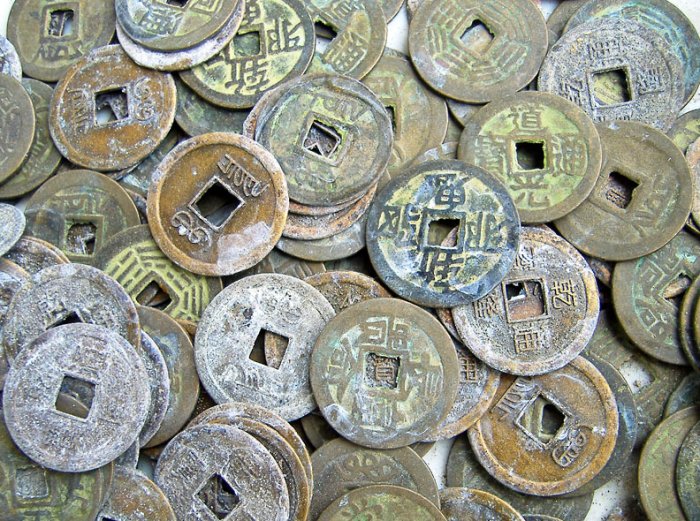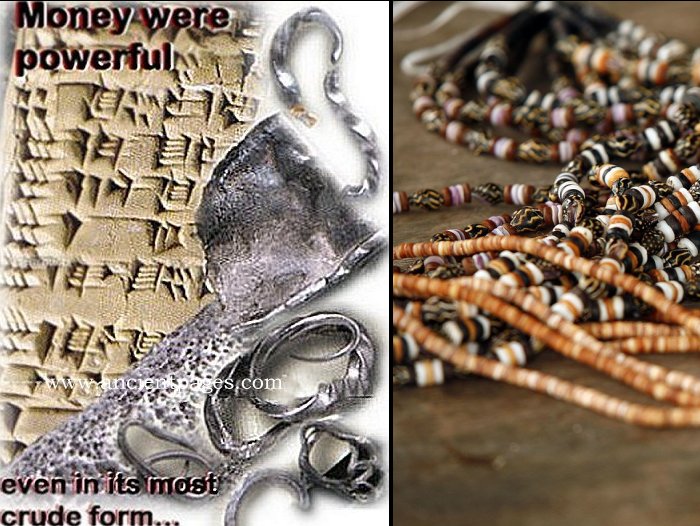Our Lives Have Always Been Manipulated By Money – Part 1
A. Sutherland - AncientPages.com - For 4500 years, human life was controlled and even manipulated by money. Ever since ancient times, money has played a central role in people's lives, regardless of whether payment has been rare shells, worthless iron coins, small springs, or stamped precious metal pieces.
Chinese bronze coins. Image credit: Plismo - CC BY-SA 3.0
In Greece, for example, prehistoric falsifiers covered cheap copper with a thin layer of gold and tin they used to cover with the thin layer of silver.
We go back 4500 years and find that silver rods were the world's first money. They were introduced in Mesopotamia to smooth the progress of trade. The origin of money is hidden in the far distant past, but for the first time, money was mentioned in writings in Mesopotamia (today: Iraq).
According to ancient cuneiform tablets, pure silver was the first standardized payment. They were shaped like rods cut off and weighed when a business was ready to be implemented.
The introduction of silver most probably took place for purely practical reasons. Trade was prevalent in the highly developed Mesopotamia, and natural objects were often heavy and unwieldy, so it was much easier to take small silver rods than oxen or cereal. According to historians, cuneiform tablets were invented for easier bookkeeping of the growing number of trade transactions.
For thousands of years, China has been using gold, silver, and even copper money, which were in circulation besides the well-known cowrie shells.
Even in those distant times, a very "elementary process of minting was in vogue; and the coins were known as the round money, bell-shaped money, and the knife-shaped money." (S.R. Wagel, "Chinese Currency And Banking")
During the early periods of China's history, the shells constituted the only medium of exchange.
About 3500 years ago, the Chinese began to use small shells as money. Shells were perfect money for the Chinese people. They were lightweight, durable, small, easy to carry, and impossible to falsify.
The extent of shell currency is currently unclear, but it was probably prevalent. As the Chinese writing system developed, it used the shell sign as the symbol for 'money.' Similarly, shells were included in characters, including such terms like "buy," "sell," and "barter."
The shells, very coveted by people living along the Indian Ocean until the 1900s, were used to pay for groceries, including food. On the other hand, the Chinese were not the only ones who paid with shells', which also suffered inflation like our modern currency.
For example, in remote regions of Uganda, a wife cost only two shells (!) in the 1700s. As a result of inflation, more than 1000 shells had to be paid to buy a wife in 1860.
People improved the roads to the sea, and many more shells came into circulation, and their value decreased. Coins of metal were known in ancient Egypt, though wealthy merchants dealing with foreign partners almost exclusively limited their use.
The most common payment among ordinary people was cereal. A monthly salary of around 200 kg was used in barter trade to obtain other goods.
Right: Papua New Guinea shell money. Image credit: Department of Foreign Affairs and Trade - SOLS0344- CC BY 2.0
Egyptians could put grain, receive or borrow some if necessary, while banks' goal was to stimulate trade, built up power, and a network of public cereal. Bank customers received a receipt for their deposits and loans and could take out or pay in other cereal banks. The receipts were also used as payment in trade.
To prevent fraud in the local bank branches, the central bank in Alexandria had copies of all service accounts.
Once upon a time, there was an Iron Age kingdom in western Asia Minor known as the Kingdom Of Lydia. Lydia was considered one of the wealthiest kingdoms of antiquity when it replaced the metal lumps with beautifully minted coins. The Lydian money was called the "Adam of coins" because it inspired later periods of coins in Europe and the Middle East. The Kingdom of Lydia was not more extensive than a city-state, but that seemingly insignificant kingdom left behind a legacy that would change history: coins.
There were already various forms of money in Egypt, China, and other great ancient kingdoms. Still, in Lydia, it was recognized the importance of a small and manageable payment for the first time.
To eliminate the great inconveniences of non-standardized money, banks and goldsmiths began to convert metal into standard coins, giving them specified shape, weight, and fineness. Circa 640 BC, the Lydian kings were the first to strike average weight and common size coins. They also marked them with their sigils to ensure the metal's authenticity. Additionally, they counted the coins!
Coins revolutionized trade because Lydian merchants no longer needed to devote their precious time weighing silver and gold pieces or exploring the metal's purity.
"Virtually all coinage in use today is the progeny" of what the Lydians initiated. (Porteous, "The Nature of Coinage")
Written by – A. Sutherland AncientPages.com Staff Writer
Copyright © AncientPages.com All rights reserved. This material may not be published, broadcast, rewritten or redistributed in whole or part without the express written permission of AncientPages.com
Expand for referencesReferences:
G. Davies, "History of Money"
S.R. Wagel, "Chinese Currency And Banking"
More From Ancient Pages
-
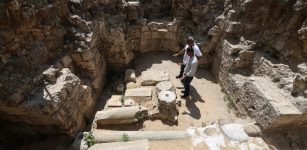 Large Ancient Roman Necropolis Is Buried Beneath The Gaza Strip – Can It And Other Ancient Treasures Be Saved?
Archaeology | Jun 26, 2022
Large Ancient Roman Necropolis Is Buried Beneath The Gaza Strip – Can It And Other Ancient Treasures Be Saved?
Archaeology | Jun 26, 2022 -
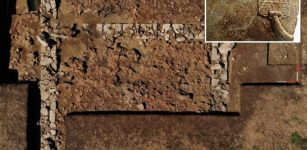 Archaic Temple (Part Of God Poseidon’s Sanctuary) At The Kleidi-Samikon Site In Greece – Unearthed
Archaeology | Jan 12, 2023
Archaic Temple (Part Of God Poseidon’s Sanctuary) At The Kleidi-Samikon Site In Greece – Unearthed
Archaeology | Jan 12, 2023 -
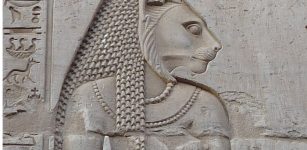 Fearsome Sekhmet: Lion-Headed Egyptian Goddess And Sister Of Ptah
Egyptian Mythology | May 13, 2020
Fearsome Sekhmet: Lion-Headed Egyptian Goddess And Sister Of Ptah
Egyptian Mythology | May 13, 2020 -
 New Study Challenges Theories Of Earlier Human Arrival In Americas – Archaeological Evidence Has Been Misinterpreted – Scientists Say
Archaeology | Apr 21, 2022
New Study Challenges Theories Of Earlier Human Arrival In Americas – Archaeological Evidence Has Been Misinterpreted – Scientists Say
Archaeology | Apr 21, 2022 -
 Hulagu Khan Destroyed Thousands Of Priceless Ancient Books Kept In The House Of Wisdom In Baghdad
Ancient History Facts | Jun 21, 2018
Hulagu Khan Destroyed Thousands Of Priceless Ancient Books Kept In The House Of Wisdom In Baghdad
Ancient History Facts | Jun 21, 2018 -
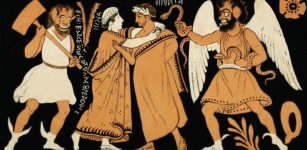 Tuchulcha: Wicked, Hideously Grotesque Etruscan Demon Identified With Both Male And Female Genders
Featured Stories | Jun 11, 2023
Tuchulcha: Wicked, Hideously Grotesque Etruscan Demon Identified With Both Male And Female Genders
Featured Stories | Jun 11, 2023 -
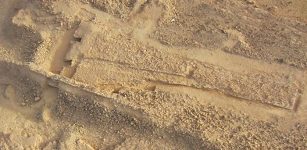 A 35 Meter-Long Stone Platform Dated To 6,000 BC Discovered In Saudi Arabia
Archaeology | Jul 11, 2020
A 35 Meter-Long Stone Platform Dated To 6,000 BC Discovered In Saudi Arabia
Archaeology | Jul 11, 2020 -
 Mysterious Books From The Unknown And ‘Impossible’ Coincidences
Featured Stories | Dec 30, 2020
Mysterious Books From The Unknown And ‘Impossible’ Coincidences
Featured Stories | Dec 30, 2020 -
 Danger Lurking In The Woods – Unknown Force And Mysterious Lights – Part 1
Featured Stories | Jul 6, 2018
Danger Lurking In The Woods – Unknown Force And Mysterious Lights – Part 1
Featured Stories | Jul 6, 2018 -
 Pre-Columbian Casarabe People In The Amazon Developed A Unique Drainage And Irrigation System
Archaeology | Jan 29, 2025
Pre-Columbian Casarabe People In The Amazon Developed A Unique Drainage And Irrigation System
Archaeology | Jan 29, 2025 -
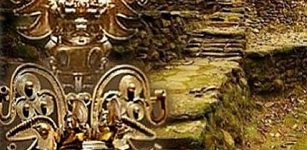 Mysterious Lost City Of The Tairona Hidden In The Jungles Of Colombia
Civilizations | Nov 9, 2018
Mysterious Lost City Of The Tairona Hidden In The Jungles Of Colombia
Civilizations | Nov 9, 2018 -
 100,000-Year-Old Case Of Deafness Discovered In Fossilized Skull Of Hunter-Gatherer
Archaeology | Jul 21, 2022
100,000-Year-Old Case Of Deafness Discovered In Fossilized Skull Of Hunter-Gatherer
Archaeology | Jul 21, 2022 -
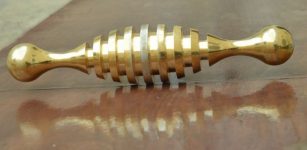 History Mystery: Gold Tool Found In Jerusalem Cemetery Baffles
Archaeology | Dec 25, 2015
History Mystery: Gold Tool Found In Jerusalem Cemetery Baffles
Archaeology | Dec 25, 2015 -
 Europe’s Earliest Culture Of Aurignacian People Made Amazing Images With Dots
Archaeology | Mar 5, 2017
Europe’s Earliest Culture Of Aurignacian People Made Amazing Images With Dots
Archaeology | Mar 5, 2017 -
 Dark History Of Pömmelte, The German Stonehenge – What Can The Nebra Sky Disc And Archaeology Reveal?
Archaeology | Jul 3, 2018
Dark History Of Pömmelte, The German Stonehenge – What Can The Nebra Sky Disc And Archaeology Reveal?
Archaeology | Jul 3, 2018 -
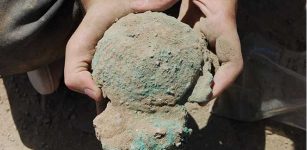 Rare Discovery Of 4,300-Year-Old Copper Ingots Left By Mistake In A Settlement In Oman
Archaeology | Jun 2, 2023
Rare Discovery Of 4,300-Year-Old Copper Ingots Left By Mistake In A Settlement In Oman
Archaeology | Jun 2, 2023 -
 Is A Viking Settlement And Even Older Church Hidden Under St. Clement’s Church In Norway?
Archaeology | Apr 13, 2017
Is A Viking Settlement And Even Older Church Hidden Under St. Clement’s Church In Norway?
Archaeology | Apr 13, 2017 -
 On This Day In History: Battle Of Rudau Was Fought – On Feb 17, 1370
News | Feb 17, 2017
On This Day In History: Battle Of Rudau Was Fought – On Feb 17, 1370
News | Feb 17, 2017 -
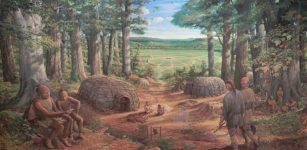 Can Aikman Mounds In Arkansas Explain The Hopewell Culture’s Mysterious Disappearance?
Featured Stories | Apr 30, 2019
Can Aikman Mounds In Arkansas Explain The Hopewell Culture’s Mysterious Disappearance?
Featured Stories | Apr 30, 2019 -
 Cremation In The Near East Dates Back To 7,000 B.C.
Archaeology | Aug 13, 2020
Cremation In The Near East Dates Back To 7,000 B.C.
Archaeology | Aug 13, 2020

